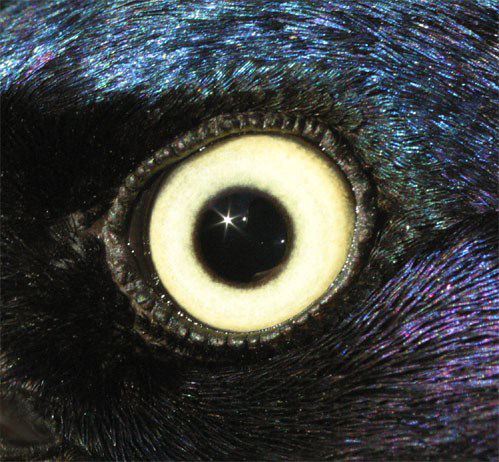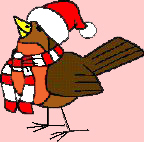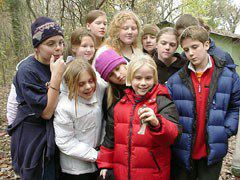 HOME: www.hiltonpond.org |
|||
|
THIS WEEK at HILTON POND (Back to Preceding Week; on to Next Week) |
|
THE GRACKLES ARE BACK! The first week in January 2002--during one of those rare South Carolina snowstorms--we got up before dawn and baited our traps with cracked corn, white millet, and black sunflowers seeds, anticipating that most of the natural food sources would be covered by white stuff and that birds in search of a meal would be easily trapped. Little did we anticipate that our midwinter brunch would bring a huge flock of blackbirds that inundated Hilton Pond Center over two days and gave us our busiest banding sessions in years--including four Red-winged Blackbirds, three Rusty Blackbirds, and 129 Common Grackles. We haven't seen any redwings or rusties since then, but this week the clear blue skies have been darkened by an avian cloud. The grackles are back! 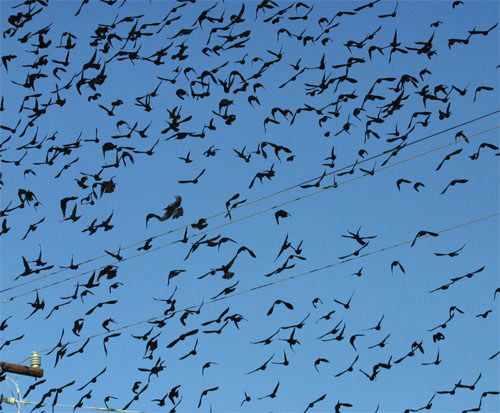
All text & photos © Hilton Pond Center Actually, the arrival of this week's substantial grackle flock--perhaps 3,000 birds--was heralded not by a seeming eclipse of the sun but by an erratic series of pinging sounds that at first we couldn't identify. Fairly quickly, we realized the noise came from acorns bouncing off the Center's passenger van--the offal of blackbirds that didn't quite swallow nuts as fast as they were plucking them from a Southern Red Oak that shades the driveway. When we went out to move the van from under the tree, the grackle flock took off with a whir of wings--and added copious droppings to the roof and windshield of the van. As you might imagine, that evening we paid a visit to the local car wash.
Common Grackles, Quiscalus quiscula, are the largest blackbirds (Icterinae) in the Carolina Piedmont, and when a bunch of them get together at a birdbath or feeder it makes for a rowdy time. The largest individuals usually turn out to be aggressive males with big feet, long 6" tails, and inch-and-a-quarter bills. They jostle and nip each other for position, but with hundreds or thousands in a flock no single bird can maintain dominance for long.
The bill is definitely the business end of a grackle (above and above right). Slightly decurved, it sometimes has a little bit of a hook on the tip--all the better to grab its prey. Grackles are omnivores and will eat just about whatever they can stuff into their voluminous crops. Although they do consume acorns and agricultural crops--as well as seeds at the feeder--they also seek out almost anything animal: grasshoppers, mice, bats, earthworms, and even bird eggs and nestlings. The grackle's long legs and big toes are adapted not only for its distinctive bobbing walk but also for wading along pond edges to capture minnows, crayfish, salamanders, and frogs. From a distance Common Grackles appear to be black, but closer up and in good light their plumage shows a wide range of of iridescent colors, as illustrated by the tail (above left) and face (below). The body of an adult male is generally blue-black with the head brighter bluish or purplish; there is some geographic variation with our southern birds often appearing somewhat greenish. Females typically have drabber plumage (and shorter tails), and fledglings are a dull tan. The eye in young birds is muddy brown, but by the end of the first winter the iris becomes a brilliant yellow-white (below) that contrasts vividly against the dark head.
Common Grackles occur throughout North America east of the Rockies with individuals usually overwintering on or not far south of their natal region. The species can be highly gregarious while breeding, and it is not uncommon to find a score of nests within a few acres on a commercial pine tree farm in the Southeast. The nest is a bulky mass of twigs and grasses that sometimes incorporates string, rags, or paper gleaned from human litterbugs. 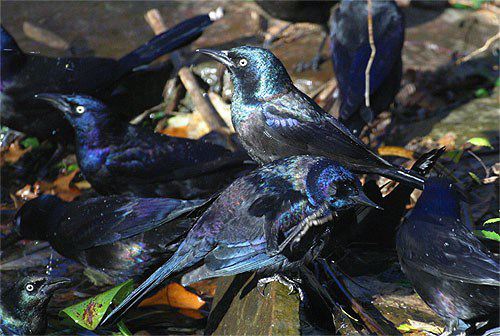 The Common Grackles that showed up this week at Hilton Pond Center are through with nesting for the year. Birds in the flock will roost together each night and noisily awaken shortly after dawn before moving to a feeding area. The day after stripping our oak trees of all their acorns, our local grackles descended to the Center's small front lawn and probed the grass in search of seeds and invertebrates. Having exhausted that food source, the flock kept right on walking into the surrounding woods, where they began flipping dead leaves one by one and gobbling up anything underneath that looked tasty. Then--as a final show of appreciation for the plentiful food and habitat we provided--they lifted off together, flew over our sparkling clean van, and once again anointed the vehicle with guano. The grackles are back; there "go" the grackles! All text & photos © Hilton Pond Center NOTE: Be sure to scroll down for an account of all birds banded or recaptured during the week, as well as some other interesting nature notes. "This Week at Hilton Pond" is written and photographed by Bill Hilton Jr., executive director of Hilton Pond Center for Piedmont Natural History. You may wish to consult our Index of all nature topics covered since February 2000. You can also use the on-line Search Engine at the bottom of this page. For a free, non-fattening, on-line subscription to "This Week at Hilton Pond," just send us an E-mail with Subscribe in the subject line. Please be sure to configure your spam filter to accept E-mails from hiltonpond.org. |
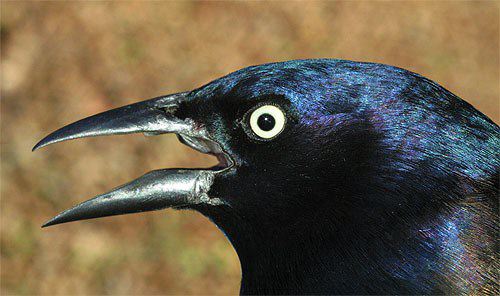
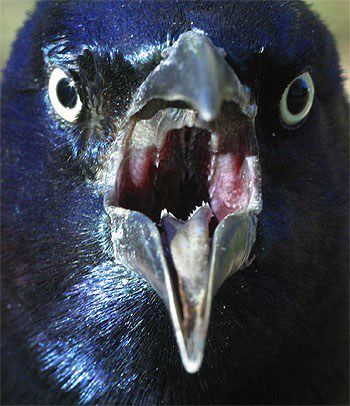 Some bird enthusiasts don't much care for Common Grackles, in part because they're big and boisterous, drive other birds from feeders, eat prodigious amounts of bird seed, and put forth sounds that might not fit the standard definition of "song." (And there's also that whitewash on the car thing.) Up close, however, we find Common Grackles to be especially fascinating.
Some bird enthusiasts don't much care for Common Grackles, in part because they're big and boisterous, drive other birds from feeders, eat prodigious amounts of bird seed, and put forth sounds that might not fit the standard definition of "song." (And there's also that whitewash on the car thing.) Up close, however, we find Common Grackles to be especially fascinating.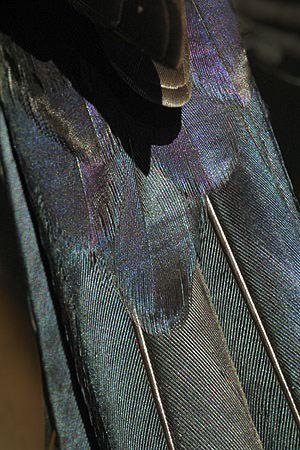 When we net Common Grackles in mid-summer at Hilton Pond Center, they often smell fishy like the pond itself--a likely sign the birds have been hunting down aquatic prey. Interestingly, although birds have no teeth, the Common Grackle is one species that has prominent tooth-like projections in its palate (above right); these barbs--like the ones at the back of the triangular tongue--keep live prey items from crawling out after the grackle swallows them whole. On the plus side, the Common Grackle is one of the few birds that will kill and eat Japanese Beetles or House Sparrows--invasive species that have wreaked havoc on native habitats.
When we net Common Grackles in mid-summer at Hilton Pond Center, they often smell fishy like the pond itself--a likely sign the birds have been hunting down aquatic prey. Interestingly, although birds have no teeth, the Common Grackle is one species that has prominent tooth-like projections in its palate (above right); these barbs--like the ones at the back of the triangular tongue--keep live prey items from crawling out after the grackle swallows them whole. On the plus side, the Common Grackle is one of the few birds that will kill and eat Japanese Beetles or House Sparrows--invasive species that have wreaked havoc on native habitats.